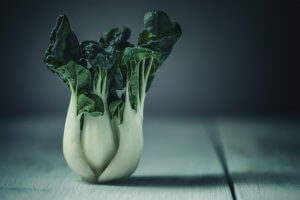What are the best substitutes for Bok Choy?
Looking for a bok choy substitute? If you can’t find bok choy or simply prefer alternatives, there are several vegetables that can serve as suitable substitutes. Try using Swiss chard, Nappa cabbage, baby spinach, kale, collard greens, broccoli rabe or tatsoi.
What is Bok Choy?
Bok choy, also known as Chinese cabbage or pak choi, is a nutritious leafy vegetable that belongs to the Brassica family. This Asian green has become popular worldwide for its mild, slightly sweet flavor and versatility in cooking. It features tender, dark green leaves and thick, crunchy white stems, both of which are edible. Bok choy is rich in vitamins A, C, and K, as well as essential minerals like calcium and iron. It is commonly used in various Asian dishes, stir-fries, soups, and salads, where its unique taste and texture enhance the overall flavor profile of the cuisine. Its growing popularity in the culinary world is due to its delightful taste and significant health benefits.
Okay, before we look at your Bok Choy substitute options, let’s deal with that empty cupboard situation!
Where can I buy Bok Choy?
If you want to be more prepared and ensure you don’t run out of bok choy then you should stock up now.
Boy choy is an ingredient that should be enjoyed at its freshest. If stored properly it can stay fresh for between 3 to 5 days in your refrigerator.
You should be able to purchase bok choy fresh from some supermarkets. However, we could not find a link for fresh bok choy that we were happy with. So instead we have included an on-line link for seeds so you can grow your own bok choy.
So why not jump on and place your order today.
STOCK UP NOW!
Bok Choy White Stem – heirloom seeds
Grow your own bok choy so you can always use the freshest ingredients. Delicious cooked or raw and packed full of flavor.
Non-GMO, open-pollinated and grown in the USA.
60 days to maturity.
What can I substitute for Bok Choy?
Here are some of the best ingredients to substitute the flavor and role that bok choy provides in your recipes.
- Swiss chard
- Nappa cabbage
- Baby spinach
- Kale
- Collard greens
- Broccoli rabe
- Tatsoi
Bok Choy substitutes
Swiss chard
Swiss chard can be a good substitute for bok choy in many dishes. While the flavors are not exactly the same, Swiss chard offers a mild, slightly earthy taste that complements various recipes, just like bok choy. Both vegetables belong to the same family (Brassica), so they share some similarities in texture and appearance, making Swiss chard a versatile replacement.
Swiss chard’s vibrant green leaves and colorful stems are particularly appealing, and they can be used in a variety of cooking methods. Try sautéing, stir-frying, steaming, or even using them raw in salads. Like bok choy, Swiss chard is packed with vitamins and minerals, such as vitamins A, C, and K. They also provide fiber and antioxidants, making it a nutritious addition to your meals.
When using Swiss chard as a substitute for bok choy, consider adjusting the cooking time slightly, as Swiss chard’s leaves are more delicate and can cook faster than bok choy.
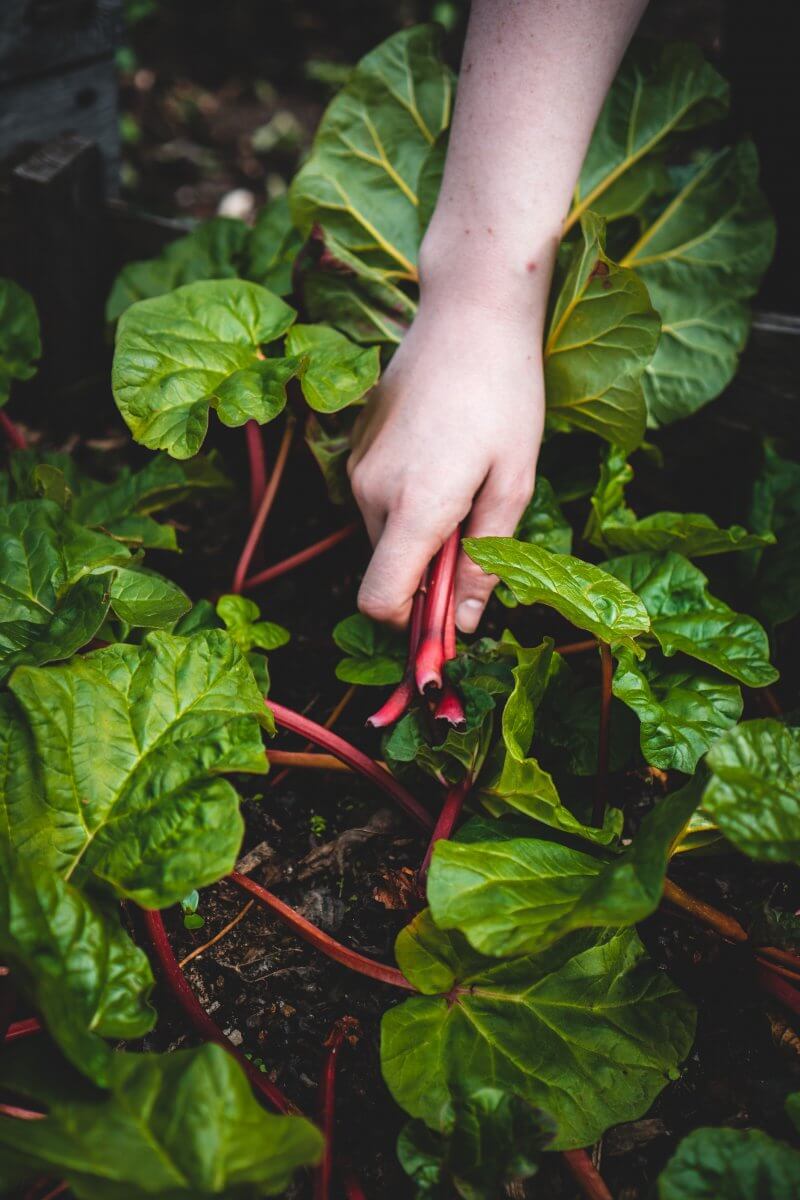
Nappa Cabbage
Napa cabbage is another excellent substitute for bok choy. Napa cabbage, also known as Chinese cabbage, has a milder and sweeter flavor compared to regular cabbage, and its texture is more similar to bok choy. Like bok choy, Napa cabbage is commonly used in Asian cuisine and works well in a variety of dishes.
Napa cabbage can be used as a substitute for bok choy in stir-fries, soups, and even raw in salads. Its tender, crinkly leaves and thick, white stems add a delightful crunch and mild taste to your dishes. It is often used in kimchi, a popular Korean fermented vegetable side dish, as well.
When substituting Napa cabbage for bok choy, you can typically use it in a 1:1 ratio, although you may want to consider adjusting the cooking time slightly, as Napa cabbage can cook faster than bok choy due to its tender leaves.
Overall, Napa cabbage is a versatile and delicious alternative to bok choy, and it’s widely available in many grocery stores, making it a convenient choice for your recipes.
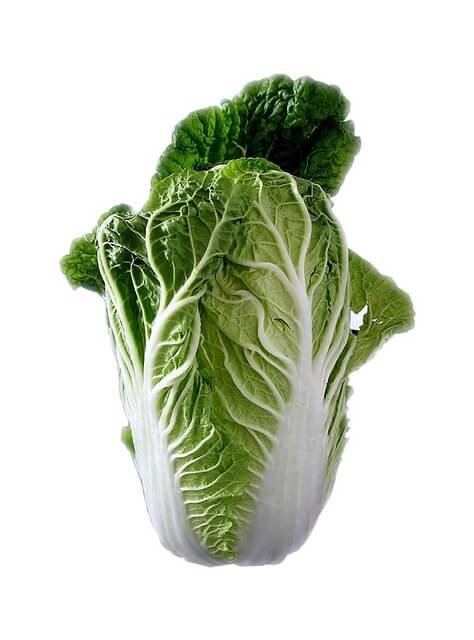
Baby Spinach
Baby spinach can be used as a substitute for bok choy in certain dishes, but it may not be the best replacement in all cases. The main reason is that baby spinach and bok choy have different textures and flavors.
Bok choy has a crunchy texture with tender leaves and thick, white stems. It has a mild, slightly sweet flavor, making it versatile in various cooking methods, including stir-fries, sautés, and soups.
On the other hand, baby spinach has a soft and tender texture with a milder taste compared to bok choy. While baby spinach can be used in salads, sandwiches, wraps, and as a side dish, it might not provide the same satisfying crunch and substance as bok choy in cooked dishes.
If you’re planning to use baby spinach as a substitute for bok choy in cooked dishes like stir-fries or soups, it’s important to note that baby spinach cooks down quickly and can become wilted. So if you prefer a softer and more delicate green in your dish baby spinach can work well. But keep in mind that the final result will be different from using bok choy.
If you’re looking for an alternative that comes closer in texture and flavor to bok choy, consider options like Swiss chard, Napa cabbage, or even tatsoi, as mentioned earlier. However, if you enjoy the taste and texture of baby spinach and want a lighter and more tender green in your dish, it can be a suitable substitute for bok choy in some recipes.
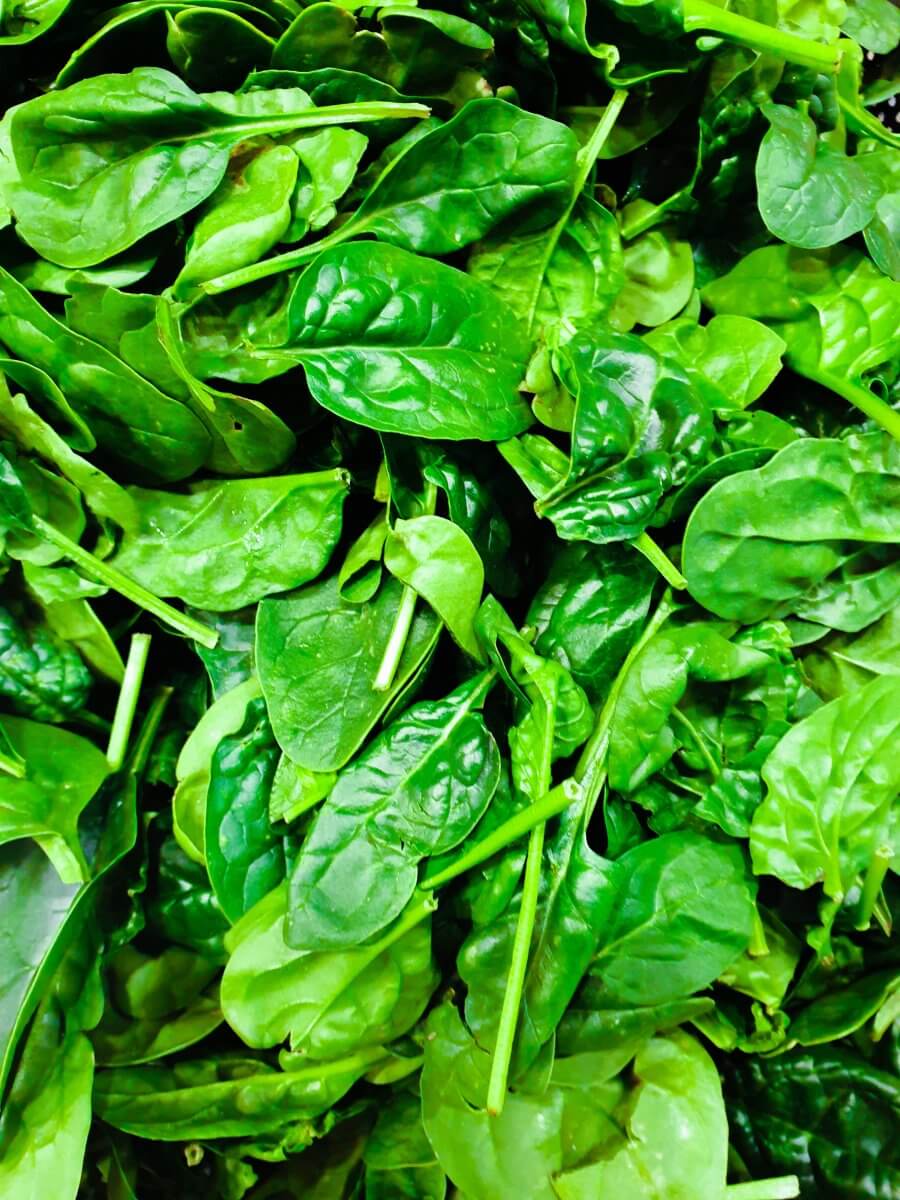
Kale
Kale can be used as a substitute for bok choy in certain dishes. However you should be aware it’s not an ideal replacement in all cases. Remember kale and bok choy have distinct differences in flavor, texture, and cooking characteristics.
It has a strong, slightly bitter flavor and a sturdy, fibrous texture, especially in its mature form. When cooked, it can become tender but retains some chewiness, which may not be the same as the more delicate texture of bok choy. Kale is often used in salads, sautés, soups, and as a side dish. It is also well-known for its impressive nutritional profile.
Bok choy, on the other hand, has a milder, slightly sweet taste and tender leaves with crisp, juicy stems. It is more delicate than kale, especially when cooked, and provides a unique crunch that kale may not offer.
If you’re considering using kale as a substitute for bok choy, it can work well in certain dishes like soups and stews where the heartier texture of kale complements the overall dish. However, in recipes where the tender and crunchy nature of bok choy is a key element, such as stir-fries or salads, kale may not be the best replacement.
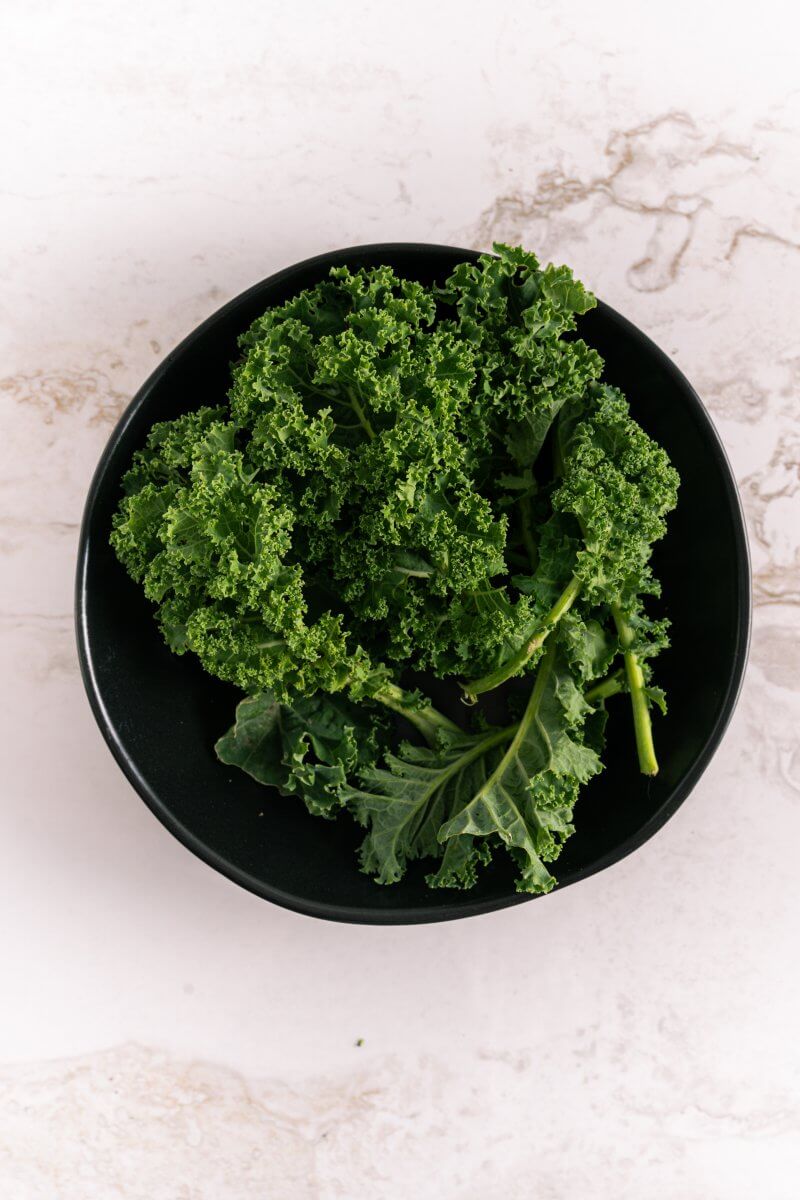
Collard greens
Collard greens can be used as a substitute for bok choy in certain dishes, but they have some differences in taste and texture.
They have a slightly bitter and earthy flavor, and their leaves are sturdy and thick. They require longer cooking times to become tender, making them well-suited for braising, boiling, or sautéing.
Bok choy, on the other hand, has a milder and slightly sweet taste, and its leaves are more tender and delicate compared to collard greens. Bok choy is often used in stir-fries, sautés, and soups, and it cooks relatively quickly, preserving its crisp texture.
If you choose to use collard greens as a substitute for bok choy, keep in mind that the cooking method may need to be adjusted to account for the differences in texture and flavor. For instance, if you’re preparing a stir-fry that usually calls for bok choy, you may need to cook collard greens for longer to achieve the desired tenderness.
Try experimenting with different vegetables in your recipes and see what new and exciting flavor combinations you can come up with.
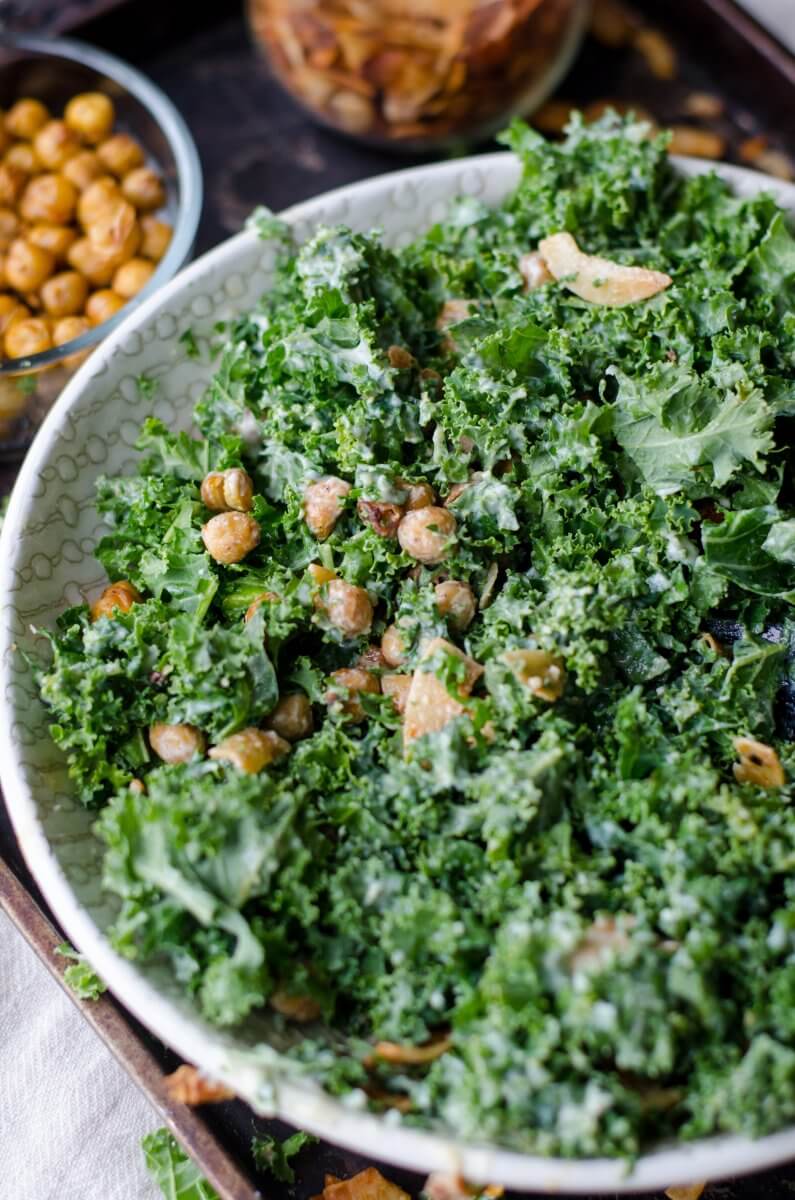
Broccoli Rabe
Broccoli rabe, is also known as rapini. It can be used as a substitute for bok choy in certain dishes, but there is a significant differences in taste and texture.
It has a slightly bitter and pungent flavor, which sets it apart from the milder and slightly sweet taste of bok choy. The leaves of broccoli rabe are tender, while the stems are somewhat thicker and have a pleasant crunch. It is commonly used in Italian and Mediterranean cuisines and is often sautéed, blanched, or roasted.
Bok choy, on the other hand, has a unique combination of tender leaves and crisp, juicy stems. This provides a mild and refreshing taste. It is commonly used in various Asian dishes, stir-fries, and soups.
If you choose to use broccoli rabe as a substitute for bok choy, consider the differences in flavor and texture. In recipes where the bitterness of broccoli rabe can complement other flavors, such as in certain pasta dishes or alongside stronger ingredients, it can be a good alternative. However, if you’re seeking the specific taste and texture of bok choy, have a look at some of the other substitutes on our list.
If you enjoy the taste of broccoli rabe don’t hesitate to try it as a substitute for bok choy.
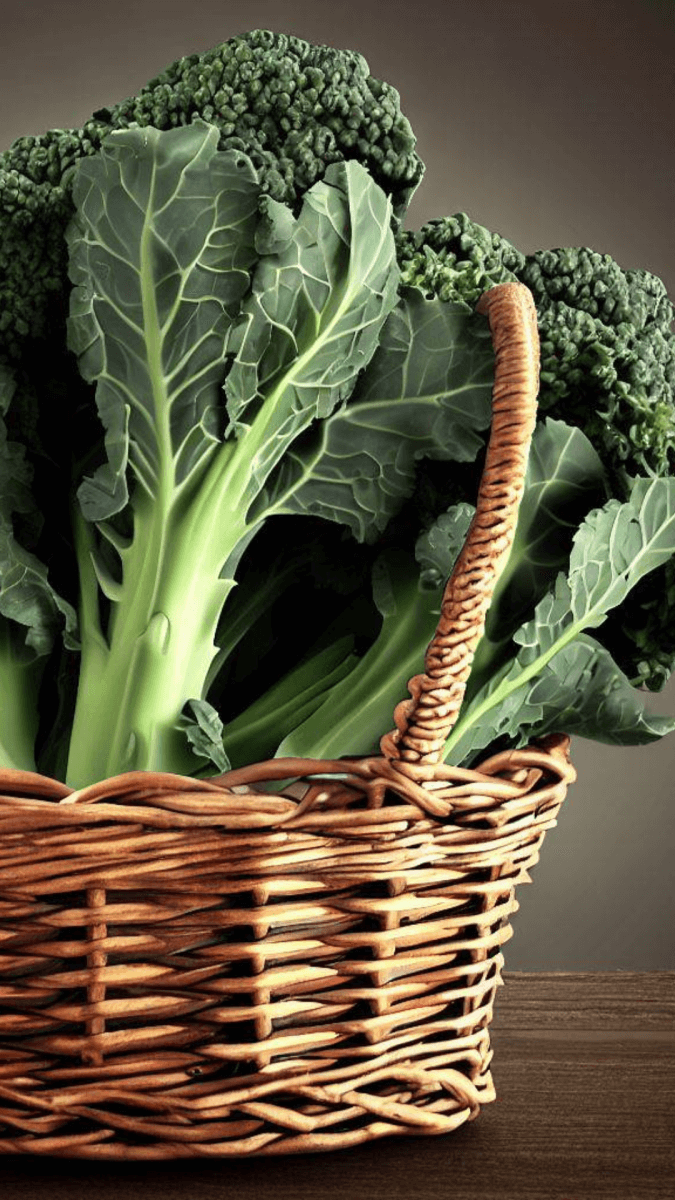
Tatsoi
Tatsoi can be an excellent substitute for bok choy in many dishes. It also goes by the name of rosette bok choy or spoon mustard, and is a member of the Brassica family, just like bok choy. As a result, it shares some similarities in taste, texture, and appearance with bok choy.
Tatsoi has tender, spoon-shaped leaves and thick, crunchy stems. Its flavor is mild and slightly peppery, making it a versatile green that can be used in various recipes. Like bok choy, tatsoi is commonly used in Asian dishes, stir-fries, salads, and soups.
When using tatsoi as a substitute for bok choy, you can expect a comparable taste and texture. This makes it an excellent alternative to bok choy. It can be used in a 1:1 ratio in most recipes that call for bok choy. Tatsoi’s slightly peppery flavor might add an interesting twist to your dish, but overall, it should deliver a satisfying and similar experience to using bok choy.
If you’re looking for a substitute that closely matches the characteristics of bok choy, tatsoi is a fantastic option. However, it is not a regular in supermarkets and its availability may vary depending on your location. If you can find it, give it a try in your favorite bok choy recipes.
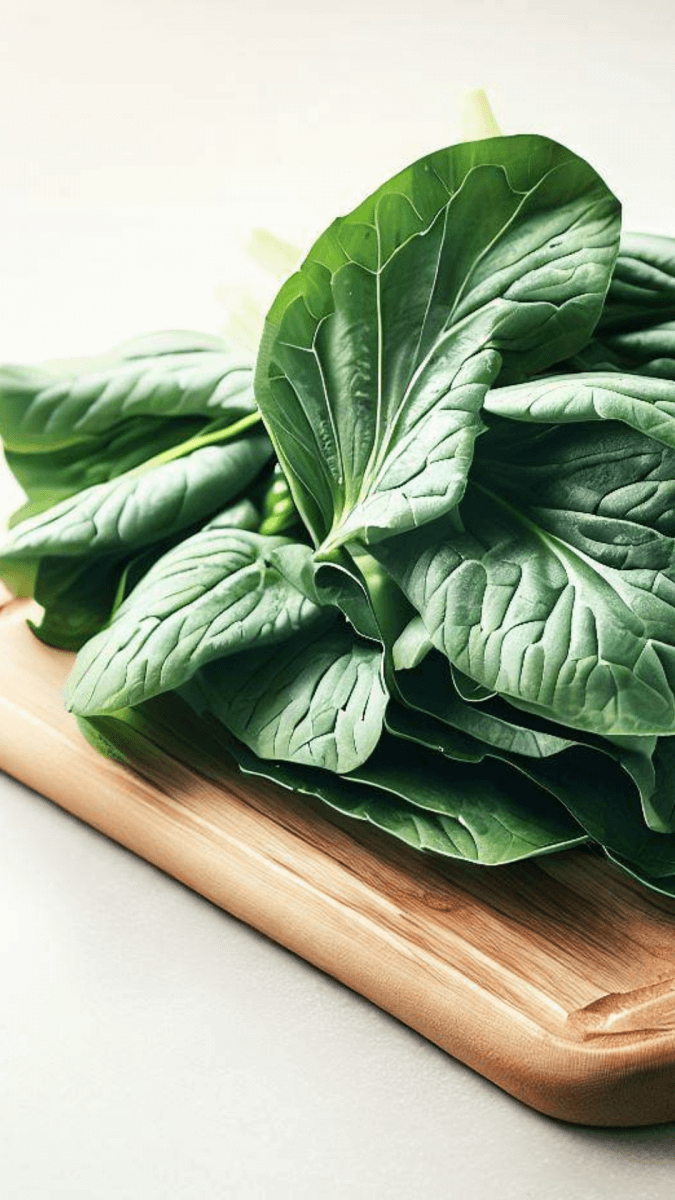
How to grow Bok Choy
We gave you an online link earlier to purchase some seeds, but how do you grow bok choy? Growing bok choy, also known as Chinese cabbage or pak choi, is relatively easy and can be done in a garden or even in containers. Here’s a step-by-step guide to help you grow bok choy:
- Choose the Right Location: Bok choy prefers a location with full sun, but it can tolerate partial shade. Ensure that the area has well-draining soil with plenty of organic matter.
- Planting Time: Bok choy is a cool-season crop and thrives best in temperatures between 45°F to 75°F (7°C to 24°C). It’s ideal to plant it in early spring or late summer to avoid extreme temperatures.
- Prepare the Soil: Before planting, work the soil to a depth of about 6-8 inches (15-20 cm) and amend it with compost or well-rotted manure to improve fertility.
- Planting Seeds: Bok choy can be grown from seeds or transplants. If using seeds, sow them directly into the soil about ¼ to ½ inch (6-12 mm) deep, and space them about 6-12 inches (15-30 cm) apart. You can plant them in rows or blocks.
- Planting Transplants: If using transplants, plant them at the same depth as they were in their original container, and space them as mentioned above.
- Watering: Keep the soil consistently moist but not waterlogged. Bok choy prefers regular watering, especially during dry periods. Avoid overhead watering, if possible, to reduce the risk of fungal diseases.
- Fertilizing: Bok choy benefits from a balanced fertilizer application. You can use a general-purpose organic fertilizer or a fertilizer high in nitrogen. Follow the package instructions for application rates.
- Thinning: If you’ve planted seeds in rows, thin the seedlings to ensure proper spacing. You can eat the thinned seedlings in salads or stir-fries.
- Pest and Disease Management: Keep an eye out for common pests like aphids, cabbage worms, and slugs. You can use natural remedies or organic insecticides to control them. Additionally, practicing crop rotation and ensuring good air circulation can help prevent diseases.
- Harvesting: Bok choy is typically ready for harvest in about 45 to 60 days after planting, depending on the variety. Harvest the entire plant by cutting it at the base, or you can pick the outer leaves as the plant grows, allowing the inner leaves to continue developing.
- Storage: Bok choy is best when used fresh, but you can store it in the refrigerator for a few days. Wrap it in a damp paper towel and place it in a plastic bag to keep it crisp.
Remember that bok choy can bolt (go to seed) in warm temperatures, so it’s essential to plant it at the right time to avoid premature flowering. By following these steps, you can grow healthy and delicious bok choy in your garden or containers. Happy gardening!
Summary for Bok Choy substitutes
In conclusion, when it comes to substituting bok choy in recipes, there are several options available, each with its unique flavor and texture. While some vegetables can closely match the taste and characteristics of bok choy, others may differ significantly. Here’s a summary of the best substitutes for bok choy:
- Swiss chard is a versatile alternative with a mild, slightly earthy flavor, suitable for sautés, stir-fries, and soups.
- Napa cabbage can also be know as Chinese cabbage. They both share similarities in taste and texture with bok choy, making it a good substitute for various Asian dishes.
- Tatsoi is a member of the Brassica family. It closely resembles bok choy in taste and texture, making it an excellent replacement in many recipes.
- While milder in flavor, baby spinach can be used as a substitute for bok choy. Try using in salads or lightly cooked dishes.
- With a stronger taste and sturdier texture, kale can work in certain dishes. However, it may not replicate the delicate nature of bok choy.
- Collard greens are a heartier option suitable for longer cooking times. They are best used in recipes that call for a stronger green presence.
- Broccoli has a slightly bitter flavor and works well in certain dishes, especially those that can benefit from a more pronounced taste.
Ultimately, the choice of substitute depends on the specific recipe and personal preferences.
Okay – that’s you all sorted with suitable substitutes for Bok Choy.
We have gathered together a lot more facts on ingredients such as herbs, spices, oils, nuts, etc. if you would like to learn some more.
